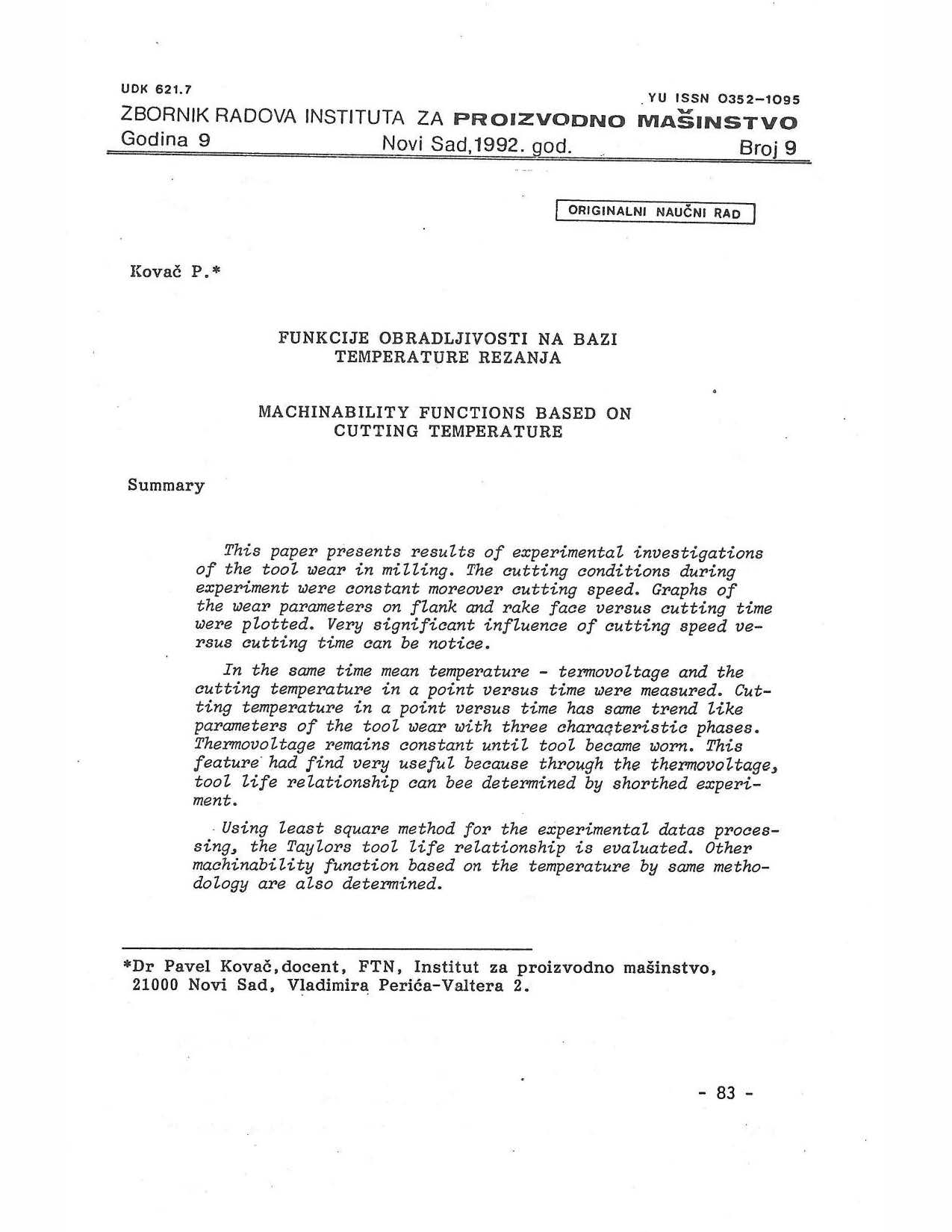
Published 1992-12-01
abstract views: 192 // FULL TEXT ARTICLE (PDF): 124
Keywords
- milling,
- cutting conditions,
- flank wear,
- thermovoltage,
- cutting temperature
How to Cite
Copyright (c) 2023 Journal of Production Engineering

This work is licensed under a Creative Commons Attribution 4.0 International License.
Abstract
This paper presents the results of experimental investigations of tool wear in milling. The cutting conditions during the experiment were constant, including cutting speed. Graphs of wear parameters on the flank and rake face versus cutting time were plotted. A very significant influence of cutting speed versus cutting time can be noticed. At the same time, the mean temperature (thermovoltage) and the cutting temperature at a specific point versus time were measured. Cutting temperature at a specific point versus time follows the same trend as the parameters of tool wear, with three characteristic phases. Thermovoltage remains constant until the tool becomes worn. This feature is very useful because the relationship between tool life and thermovoltage can be determined through shortened experiments. Using the least square method for experimental data processing, Taylor's tool life relationship is evaluated. Other machinability functions based on temperature, using the same methodology, are also determined.

